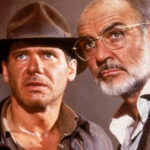

Microsoft is one of the largest and most influential technology companies in the world, with a history marked by innovations that have transformed the way we interact with technology. Founded in 1975 by Bill Gates and Paul Allen, the company started with a simple operating system for personal computers and quickly evolved to become a global powerhouse in software, hardware, and cloud services development.
But behind the products and services we know, there are many fascinating tidbits that illustrate not only the company’s exponential growth but also its bold strategies and surprising innovations.
In this text, we will explore some of these intriguing and lesser-known facts about Microsoft, revealing curious and unexpected aspects that have shaped the technology giant’s trajectory and continue to influence the modern world.
1 – THE FIRST COMPUTER TO USE WINDOWS
The IBM PC XT, released in 1985, was a significant milestone. With a 128K EGA configuration, 640K of RAM, and a 10MB (formatted) hard drive, it brought innovations for its time.
Windows 1.0 introduced a colorful graphical interface, although color monitors were rare at that time.
The system included applications like the Reversi game, a calendar, a notepad, a calculator, a clock, the command prompt, Write, Control Panel, and Paint. Additionally, it was the first Microsoft system to support the use of a mouse and to utilize windows and icons in the graphical interface.
2 – WINDOWS ALMOST HAD A DIFFERENT NAME
Windows was initially called “Interface Manager”. Fortunately, the Marketing department intervened and changed the name.
3 – IN THE CLOUD AND UNDER THE SEA
Microsoft has an underwater data center as part of the Natick project, which aims to develop faster and more environmentally friendly data centers.
This project allows data centers to float on the sea’s surface or be anchored on the ocean floor. The idea is to reduce energy consumption by minimizing cooling costs, utilizing renewable energy sources, and improving connection speed by placing servers closer to users, who, according to Microsoft, are less than 200 km from the coast.
4 – THE FIRST SMARTWATCH
Meet the Datalink 150, the “smartwatch” released by Microsoft in 1994! Developed in collaboration with the Timex Group, this watch was the first smartwatch to receive certification from NASA and was used by astronaut James H. Newman during a space mission.
5 – WHAT WAS THE FIRST APPLICATION?
The first application created by Microsoft was Excel, a spreadsheet editor widely used today by businesses and professionals, particularly for financial and accounting purposes.
6 – CREATING MULTIPLE PRODUCTS
Microsoft was a pioneer in developing many technology prototypes, such as real-time translation, tablets, and internet-connected televisions. In fact, Microsoft was responsible for coining the term “tablet”.
However, most of these prototypes were never released to the market, and those that were often did not achieve success.
7 – BILL GATES WAS ONCE ARRESTED
In 1977, Bill Gates experienced an unusual situation when he was arrested in Albuquerque, New Mexico.
At the time, Gates was involved in a business trip for Microsoft, which was just beginning to make a name in the software industry. The reason for the arrest was a traffic violation: Gates was driving without a valid license.
He was detained for a short period and, after resolving the issue with local authorities, was released.
Although relatively minor compared to his later career, this episode highlights a curious moment in the life of the future technology magnate and Microsoft co-founder.
8 – BILL GATES’ WIFE WORKED AT THE COMPANY
Before marrying Bill Gates, Melinda Gates worked as a marketing manager for Bob, a software developed for Windows 3.1.
However, the project was not successful at the time. In 2021, the former couple, known for their involvement in various philanthropic initiatives, finalized their divorce.
9 – CREATING A CLASSIC GAME
While studying the fundamental concepts of programming in BASIC, Bill Gates decided to explore binary code to create something interactive and fun. Thus, he developed his first software: the classic “Tic Tac Toe” game.
10 – FREE DRINKS AND FOOD FOR EMPLOYEES
Microsoft provides free beverages for its employees, although over 23 million of them end up abandoned on campus annually.
Among employees’ preferences are milk and orange juice.
Additionally, there are free snacks distributed throughout the campus. In terms of food, around 35 cafeterias serve approximately 37,000 people daily.
Celebrating events with M&M chocolates is also a company tradition.
11 – OVER 5,000 PIECES OF ART
Microsoft is one of the leading corporate collectors of contemporary art, with a collection of over 5,000 works. The collection includes pieces by renowned artists such as Cindy Sherman, Chuck Close, and Takashi Murakami.
12 – TURNED DOWN YOUTUBE
Since its founding, Microsoft has acquired several companies and smaller projects, including major names like Skype, LinkedIn, and GitHub. However, the list of acquisitions could have been even more impressive if the company hadn’t turned down an offer to acquire YouTube.
Before YouTube was acquired by Google, its founders attempted to sell the platform to Microsoft for a “mere” US$ 500 million. Bill Gates and Paul Allen missed a valuable opportunity, considering that YouTube is now worth over US$ 350 billion.
In summary, Microsoft is not just a technology giant but also an innovative force that has profoundly and enduringly shaped the industry. Since its founding in 1975, the company has been a pioneer in developing operating systems and software, transforming the use of technology in daily life.
The evolution of Windows, advancements in Office, and innovations in cloud computing are just a few examples of its global impact. Additionally, Microsoft has stood out for its strategic acquisitions and investments in research and development, reflecting its commitment to ongoing innovation.
With a future-focused vision and a strategy that prioritizes sustainability and inclusion, Microsoft continues to be a leading driver of digital transformation in the 21st century. The company’s legacy is a testament to its ability to adapt and lead in a constantly changing technological landscape.








